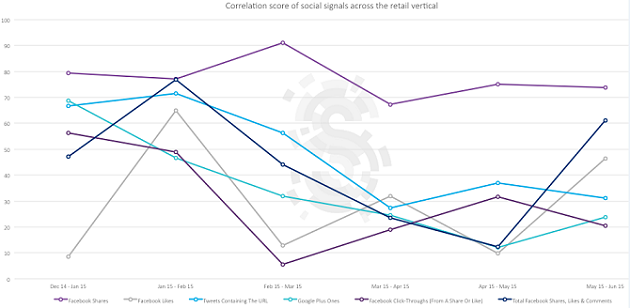Has Google Turned up Social Signals as a Ranking Factor?
Google stated that a search change from earlier this month was not related to Panda. Could that mean social signals from Facebook and Twitter are ranking factors?
Google stated that a search change from earlier this month was not related to Panda. Could that mean social signals from Facebook and Twitter are ranking factors?
Google doesn’t do announcements on search updates very often, so when they do the world and his dog sits up and takes notice.
When search marketers started noticing significant movement in early May the industry fully expected it to go unexplained as just another of the search giant’s algorithm tweaks.
Then Google came out and admitted that there had been a change to the core algorithm relating to how ‘quality signals’ work when measuring content quality.
This is a big deal for several reasons but the one eye-opening admission is that the update is not a Panda-related change. Traditionally, any content quality measurement had been performed through the infamous algorithm patent so understanding what that covers goes some way to telling us what this is therefore looking at.
Panda was first released in February 2011 and affected more than 10% of queries and focused on a number of factors to understand content quality.
Those factors, as far as the patent explains, looked at everything from how well content is written on page, how well the page fits navigationally within the query and even the relevance and quality of the links pointing out of, and into, that content.
Search patent writer Bill Slawski covers this in more detail, explaining how the filter may work in principle. What is clear from his research is that there are definitely areas not covered by the patent that could very easily be used to further validate content quality.
So far then we know that this latest update is not Panda, so what is it? Google has told us very little in real terms but has admitted that it is part of the core algorithm. That tells us that whatever it is that has changed updates in real time and that leads us onto two specific areas of interest from a ranking perspective.
Ranking signals is something we track as a Group through our Roadmap tool and below I can share some of the initial findings from the latest data refresh.
Before we dive into what that data is telling us it is worth caveating by saying that the tool updates monthly and the next update is due within the next week or so, so we will know much more then.
For now, however, there are already points of interest worth discussing in the context of the latest update.
Foe those not aware of how the tool works it tracks dozens of key ranking factors by vertical over time, allowing us to understand how those factors affect rankings and how they vary in importance over time.
While there is always variation there are two particular areas that have seen definite upside in the past few weeks:
This is a data set we have been monitoring for some time, as there is an increasing correlation between how long people stay on site and how well that site ranks for that keyword group.
Below we see that data plotted, showing how long people stick around on the site in positions one through to 15 on average across all the vertical we track:

Whilst this hasn’t shot up as a key ranking factor in the last month there is an unmistakable uptick in the number of high-ranking sites with good time on site metrics.
The same is true of bounce rate:

Where things start to get really interesting, however, is when we turn our attentions to social signals across the key platforms.
It’s an area that is a logical one for Google to begin turning up as they have said previously that sharing is an obvious validation of quality.
That stance was further qualified with news that the search company had struck a deal with Twitter to show tweets in real time search or, in other words, get access again to its data firehose.
As a result it’s a point we’ve been monitoring very closely over recent weeks and the initial data set suggests there has been definite movement.
It is VERY early days but Facebook engagement metrics and Google Plus Ones appear to be leading the charge (measured at domain level).

Interestingly there has been little movement on Twitter yet but this may be something that is integrated at a later date as Google’s engineers finalize how they are using the data post-deal.
Whatever happens I will update as soon as we have a few more weeks of data to compare.
Does this change anything? That really depends on your current strategy. Clearly investment in quality content becomes even more important as sites now have both carrot and stick incentives to produce it.
On the one hand Panda looks to seek out and negatively impact poor quality output, while this latest iteration to the core algorithm looks to be rewarding the best of it with better visibility.
Great content improves time on site and promotes social sharing.
The good news, of course, is that the search engine will be looking at this by vertical and even by page so don’t worry if you are in a niche where social sharing never happens. As always measurement will be relative but by being the best of your peer group will put you in the best possible position.
The answer is an audience focused content strategy and this free download will help you build up such a plan.
It’s early days but what is clear is that the reward for creating quality content just got greater.